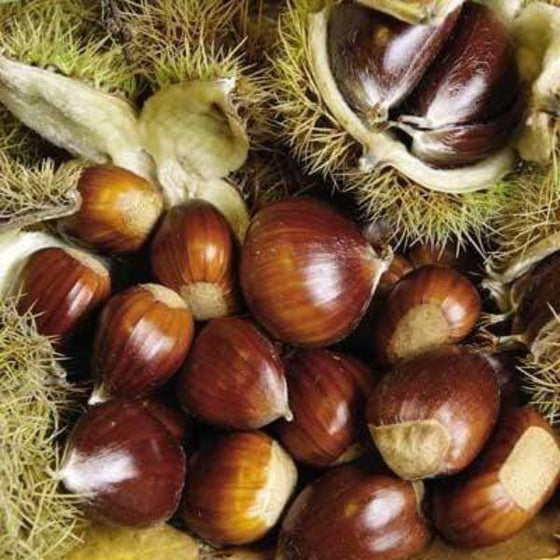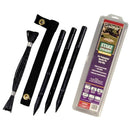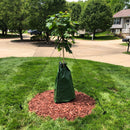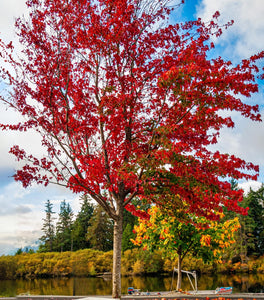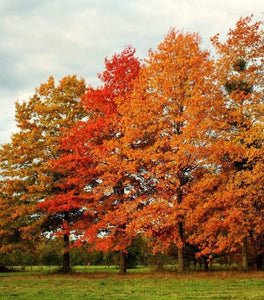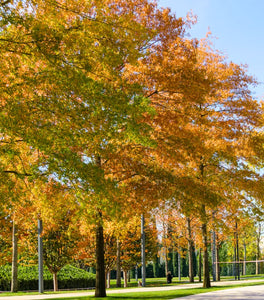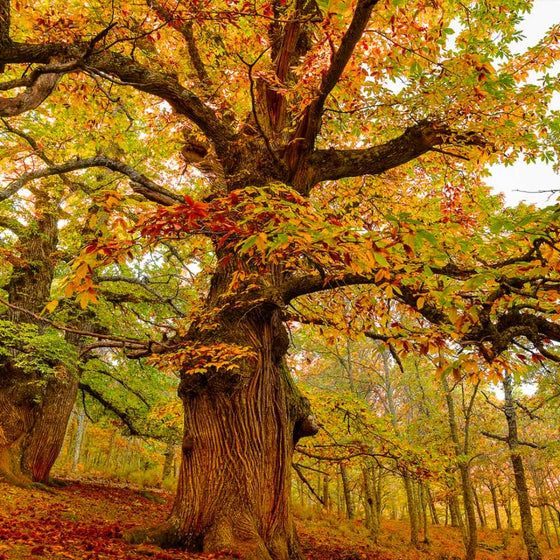
Images Depict Mature Plants
Dunstan Chestnut Tree – Blight-Resistant, Fast-Growing Nut Tree for Wildlife and Edible Harvests
Blight-resistant chestnuts for reliable harvests.
The Dunstan Chestnut Tree (Castanea dentata × mollissima) is the premier blight-resistant chestnut hybrid, combining the rich flavor of the American chestnut with the disease resistance of the Chinese chestnut. This fast-growing nut tree produces an abundant crop of sweet, edible chestnuts that delight both people and wildlife. Hardy in USDA Zones 5–9, it thrives in a wide range of climates and soils, making it perfect for home orchards, wildlife food plots, and large landscapes.
Fast growth and early nut production.
Dunstan Chestnuts are known to grow up to 3 feet per year, maturing into a stately tree 40–60 feet tall with a spreading canopy. Unlike traditional American chestnuts that take many years to bear, this hybrid begins producing delicious, sweet chestnuts in just 3–5 years when planted with a pollinator partner. Its blight resistance ensures long-term health and productivity, giving you a dependable source of high-quality nuts for decades.
Ideal for wildlife and food plots.
The highly nutritious chestnuts of the Dunstan tree are a magnet for deer, turkey, and other wildlife, making it the top choice for hunters, landowners, and habitat managers. Its fast growth, large nut yields, and consistent annual production make it a cornerstone of wildlife management food plots, while also offering a delicious harvest for roasting and baking.
Low-maintenance and versatile.
Once established, this cold-hardy chestnut tree requires minimal care. Plant in full sun and well-drained soil, and it will reward you with decades of reliable nut production and a majestic presence in your landscape. Whether you’re creating a backyard orchard, starting a deer-attracting food plot, or simply adding a disease-resistant, long-lived tree, the Dunstan Chestnut is a smart, sustainable investment.
be sure to check out our blog: What Happened To The Chestnut Tree?
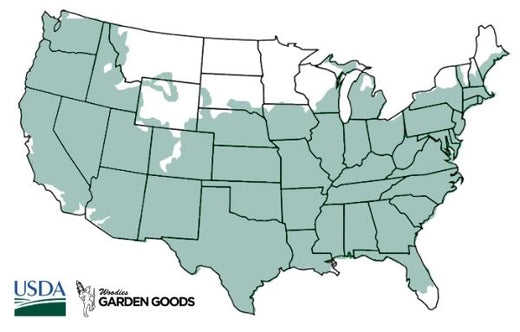
| Hardiness Zone: | 5-9 |
|---|---|
| Mature Height: | 40 to 60 feet |
| Mature Width: | 25 to 30 feet |
| Classification: | Broad leaved deciduous tree |
| Sunlight: | Full sun |
| Habit: | Upright, umbrella shaped canopy |
| Foliage: | Dark green |
| Flower Color: | Inconspicuous |
| Pruning Season: | No pruning needed |
| Soil Condition: | Any well-drained soil |
| Water Requirements: | Water well until established |
| Uses: | Tolerates moist soil and full sun. Full sun brings out the best fall color. Will adapt to drier sites. |
How to Care for Dunstan Chestnut Tree
Before you buy a Dunstan Chestnut Tree , make sure to read about the care instructions that are required and recommended to keep this plant healthy and flourishing.
How do I plant a Dunstan Chestnut Tree for best nut production?
Choose a location with full sun and well-drained soil. Plant at least two trees for proper pollination, spacing them 30–40 feet apart. Dig a hole twice as wide as the root ball and just as deep, set the tree with the top of the root ball level to the soil surface, and backfill halfway. Water thoroughly to settle the soil, then finish filling and water again. Apply a 2–3 inch layer of mulch around the base, keeping it a few inches from the trunk to prevent rot. Planting in spring or early fall gives the roots time to establish before winter or summer stress.

How often should I water a Dunstan Chestnut Tree after planting?
Water deeply once or twice per week during the first growing season to keep the soil evenly moist but never soggy. This helps the tree establish strong roots and encourages fast growth up to 3 feet per year. After the first year, Dunstan Chestnut is relatively drought-tolerant, needing supplemental water only during extended dry periods. A consistent mulch layer helps conserve soil moisture and protects roots from temperature extremes.
When and how should I fertilize my Dunstan Chestnut Tree?
Fertilize in early spring with a balanced, slow-release tree fertilizer to promote healthy foliage and vigorous nut production. Spread the fertilizer evenly around the tree’s drip line and water thoroughly to help nutrients reach the roots. Avoid heavy late-summer fertilization so new growth can harden off before winter. A single spring feeding is typically enough to support both strong annual growth and plentiful sweet chestnuts.

How and when should I prune my Dunstan Chestnut Tree?
Prune a Dunstan Chestnut Tree in late winter to very early spring, while the tree is fully dormant and before new growth begins. Dormant pruning reduces stress on the tree and helps prevent the spread of disease. Start by removing any dead, damaged, or crossing branches, and thin crowded areas so that sunlight and air can move freely through the canopy, which promotes strong nut production and healthy growth. As the tree matures, continue to maintain a single central leader by cutting back any competing upright shoots. Avoid heavy summer or fall pruning, which can stimulate tender new growth that may be damaged by winter cold. With careful, seasonal pruning, your fast-growing, blight-resistant Dunstan Chestnut will keep its strong structure and high annual chestnut yields for decades.



